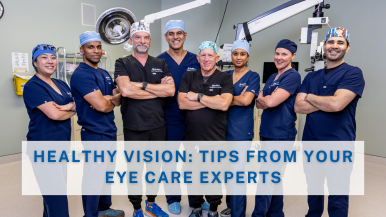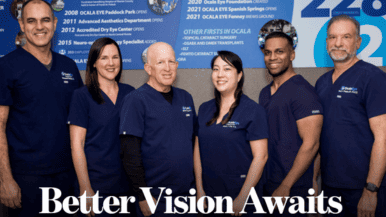As we navigate through the landscape of vision correction surgeries, it’s essential to understand that not all procedures are suitable for every stage of life. While LASIK has become synonymous with clear, glasses-free vision for many, it’s crucial to recognize that age plays a significant role in determining candidacy. At Ocala Eye, we specialize in providing tailored solutions for our patients, ensuring optimal outcomes and satisfaction. In this blog post, we delve into the age range for LASIK and explore alternative options for those who may not be suitable candidates.
LASIK, or Laser-Assisted In Situ Keratomileusis, is a widely performed refractive surgery designed to correct common vision problems such as nearsightedness, farsightedness, and astigmatism. However, ideal candidates for LASIK typically fall within a specific age range, primarily due to the stability of their vision.
In general, individuals aged 18 and above are considered potential candidates for LASIK, provided they meet certain criteria such as stable vision prescription and overall eye health. This age range coincides with the period when most individuals’ vision stabilizes, minimizing the risk of regression post-surgery.
However, as individuals progress through different stages of life, their ocular health and vision needs may evolve. Patients often visit our practice expressing interest in LASIK but may discover that their age places them outside the ideal candidacy range. Here’s a breakdown of age-related considerations and alternative surgeries that may be more suitable:
Young Adults (18-45):
LASIK is a viable option for many young adults who have stable vision. However, it’s essential to ensure that their prescription has stabilized before proceeding with surgery.
Middle-Aged Adults (45-60):
While LASIK remains an option for some within this age group, presbyopia—a natural age-related decline in near vision—may start to become a concern.
Alternative: Refractive lens exchange (RLE) or also known as clear lens extraction (CLE) can address both refractive errors and presbyopia by replacing the eye’s natural lens with a multifocal or accommodating IOL. This option can provide clear vision at multiple distances, reducing dependence on glasses or contact lenses.
Older Adults (60 and above):
LASIK likely will not be suitable for most individuals in this age group due to increased risk factors such as cataracts or other age-related eye conditions.
Alternative: Cataract surgery presents an opportunity to not only remove cataracts but also correct refractive errors simultaneously. Advanced intraocular lenses (IOL), including multifocal or toric lenses, can address both cataracts and refractive issues, offering improved vision without the need for glasses.

At Ocala Eye, our team of experienced surgeons are committed to helping patients achieve their vision goals at every stage of life. Whether it’s LASIK, refractive
lens exchange, or cataract surgery, we offer personalized solutions tailored to individual needs and circumstances.
If you’re considering vision correction surgery or have questions about your eligibility, we encourage you to schedule a consultation with one of our specialists. Together, we can explore the best options to enhance your vision and quality of life.
Remember, age may influence candidacy for certain procedures, but there’s a solution available for almost every vision challenge. Let us guide you on your journey to clearer vision and greater freedom from glasses.
Want to know if you might be a candidate for LASIK? Take our brief LASIK candidacy quiz to find out today, or contact us to schedule your free LASIK consultation.




